Some poor fellow probably spent a decade or two on this – not knowing I was planning something nefarious. He’s looking to improve Mankind and all I see is a better way to torture fellow anglers.
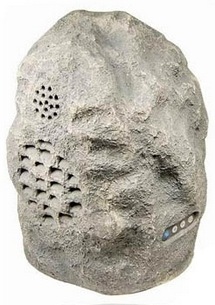 In-stream substrate has always been my weakness, as abandoned cars and sectional sofa’s take on new meaning to a brownline devotee. This may be a “mainstream moment” as I can see hundreds of uses to put the “wireless rock speaker” to work increasing both habitat for critters, and amusement for us sinister types, crouched in the bushes with a microphone.
In-stream substrate has always been my weakness, as abandoned cars and sectional sofa’s take on new meaning to a brownline devotee. This may be a “mainstream moment” as I can see hundreds of uses to put the “wireless rock speaker” to work increasing both habitat for critters, and amusement for us sinister types, crouched in the bushes with a microphone.
At $150 these suckers are cheap. Add a dozen to your favorite run crank the volume knob, and eliminate rock snot, mud snails, and all interlopers.
Some fellow intent on his fly with you hidden offering timely elementary school tips, “Hey Batter-Batter, Swing!”
If that doesn’t get him off his game, queue the Grizzly Bear growl…
Technorati Tags: wireless rock speaker, instream substrate, age approximates shoe size

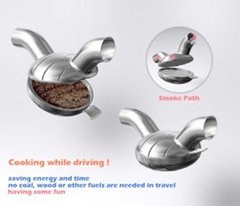 I always assumed that’s why they took the menus away when they took your order, so you couldn’t point at the picture and protest.
I always assumed that’s why they took the menus away when they took your order, so you couldn’t point at the picture and protest.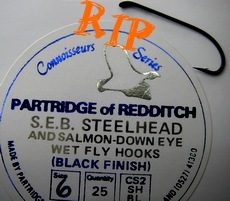 I don’t know why I expected anything different, I wrote enough articles on the decline in “genetic diversity” to know better. It’s part and parcel of the “WalMart” phenomenon, small Mom and Pop business’s forced out of existence by sinister and cavernous chain stores.
I don’t know why I expected anything different, I wrote enough articles on the decline in “genetic diversity” to know better. It’s part and parcel of the “WalMart” phenomenon, small Mom and Pop business’s forced out of existence by sinister and cavernous chain stores.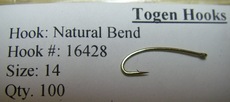
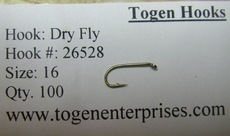 The “Natural Bend” is an elongated hook and #20’s are about the size of a traditional #16, I ordered #20 – #16’s to accommodate the normal sizes I use.
The “Natural Bend” is an elongated hook and #20’s are about the size of a traditional #16, I ordered #20 – #16’s to accommodate the normal sizes I use.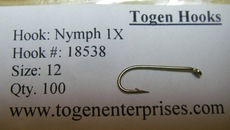 My thoughts on the subject are well documented. 100 years ago almost every fish hook in the world came from Redditch, England. No matter what the label said, it was a Sealy, a Partridge, or an Allcock. I think the same holds true today – no matter what the label says, it’s likely a Tiemco, Gamakatsu, or an affiliated factory.
My thoughts on the subject are well documented. 100 years ago almost every fish hook in the world came from Redditch, England. No matter what the label said, it was a Sealy, a Partridge, or an Allcock. I think the same holds true today – no matter what the label says, it’s likely a Tiemco, Gamakatsu, or an affiliated factory.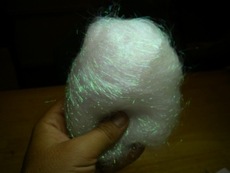 I found a better retailer for the Angelina (“Ice Dub”) fibers,
I found a better retailer for the Angelina (“Ice Dub”) fibers, 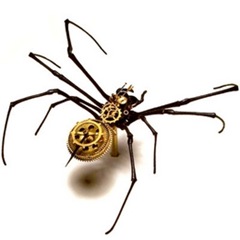 I can’t confirm whether he’s a fisherman or not, but the watch parts should make additional weight unnecessary.
I can’t confirm whether he’s a fisherman or not, but the watch parts should make additional weight unnecessary.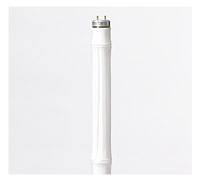 I lack the refinement to get sentimental over rod materials, mostly because I went from a steel Ace Hardware rod, straight to Fiberglas. Gentlemen of leisure owned bamboo, but only the Ladies lived in my neighborhood. If you’ve gambled away the ancestral castle and suffer further indignity by being banished to the garage, we may have the decor you’re seeking.
I lack the refinement to get sentimental over rod materials, mostly because I went from a steel Ace Hardware rod, straight to Fiberglas. Gentlemen of leisure owned bamboo, but only the Ladies lived in my neighborhood. If you’ve gambled away the ancestral castle and suffer further indignity by being banished to the garage, we may have the decor you’re seeking. I have nothing against Canaries, but they’ll be joining the ranks of the unemployed due to nano-science. It’s bad enough that the television has smiling, well coifed, ersatz people hawking underarm protection – but soon they’ll be hunting fishermen with torches and pitchforks.
I have nothing against Canaries, but they’ll be joining the ranks of the unemployed due to nano-science. It’s bad enough that the television has smiling, well coifed, ersatz people hawking underarm protection – but soon they’ll be hunting fishermen with torches and pitchforks. I can’t decide whether it’s chumming or littering, I guess I’ll leave it up to you.
I can’t decide whether it’s chumming or littering, I guess I’ll leave it up to you.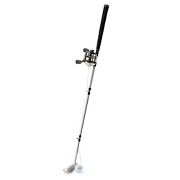 Golfers and Fisherman have a special Hell reserved; fishermen will burn everlasting because we took the worst the Devil offered and still enjoyed ourselves. When Old Beelzebub froze us, we went ice fishing, when burnt – we slathered on sun block, and carried twice our beer ration – what’s coming we earned, as Lucifer does not take being mocked lightly.
Golfers and Fisherman have a special Hell reserved; fishermen will burn everlasting because we took the worst the Devil offered and still enjoyed ourselves. When Old Beelzebub froze us, we went ice fishing, when burnt – we slathered on sun block, and carried twice our beer ration – what’s coming we earned, as Lucifer does not take being mocked lightly.